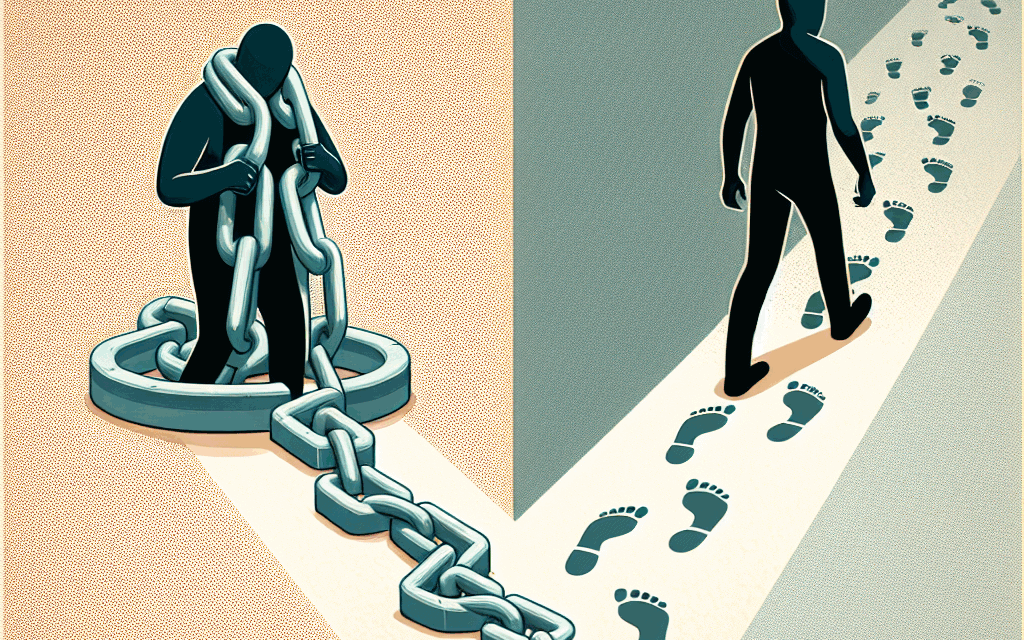Understanding the Risks: Distinguishing Between Addiction and Habit
In our daily lives, we often engage in various behaviors that can be classified as either habits or addictions. While both terms are frequently used interchangeably, they represent fundamentally different concepts with distinct implications for our health and well-being. Understanding the differences between addiction and habit is crucial for recognizing the risks associated with each and for developing effective strategies for managing our behaviors. This article delves into the nuances of addiction and habit, exploring their definitions, characteristics, psychological underpinnings, societal impacts, and strategies for management.
Defining Addiction and Habit
To effectively distinguish between addiction and habit, it is essential to define each term clearly. Addiction is typically characterized by a compulsive engagement in a behavior despite negative consequences. It often involves a physical or psychological dependence on a substance or activity, leading to significant impairment in daily functioning. In contrast, a habit is a routine behavior that is often performed automatically and can be beneficial or neutral in nature. While habits can be difficult to change, they do not usually involve the same level of compulsion or negative consequences associated with addiction.
Characteristics of Addiction
Addiction is marked by several key characteristics:
- Compulsion: Individuals with addiction feel an overwhelming urge to engage in the behavior, often prioritizing it over other important aspects of their lives.
- Loss of Control: Addicts often struggle to control their behavior, even when they recognize the harm it causes.
- Tolerance: Over time, individuals may require increasing amounts of a substance or more intense engagement in a behavior to achieve the same effect.
- Withdrawal Symptoms: When attempting to reduce or stop the behavior, individuals may experience physical or psychological withdrawal symptoms.
- Negative Consequences: Addiction often leads to significant negative consequences in various areas of life, including health, relationships, and work.
Characteristics of Habit
In contrast, habits exhibit different characteristics:
- Automaticity: Habits are often performed automatically, without conscious thought or effort.
- Neutral or Positive Impact: Many habits can be beneficial, such as regular exercise or healthy eating, and do not typically lead to negative consequences.
- Flexibility: Unlike addictions, habits can often be modified or changed with relative ease.
- Context-Dependent: Habits are often triggered by specific contexts or cues, such as time of day or environmental factors.
- Intentionality: While habits can become automatic, they often begin as intentional behaviors that serve a purpose.
The Psychological Underpinnings of Addiction and Habit
The psychological mechanisms underlying addiction and habit formation are complex and multifaceted. Understanding these mechanisms can provide valuable insights into why certain behaviors become compulsive and how they can be modified.
The Role of Reward Systems
Both addiction and habit formation are closely linked to the brain’s reward systems. The release of neurotransmitters, particularly dopamine, plays a crucial role in reinforcing behaviors. When an individual engages in a pleasurable activity, such as eating, exercising, or using drugs, the brain releases dopamine, creating a sense of pleasure and reinforcing the behavior.
In the case of addiction, the reward system becomes hijacked. Substances or behaviors that lead to addiction often produce a more intense and immediate release of dopamine compared to natural rewards. This heightened response can lead to a cycle of compulsive behavior, as individuals seek to replicate the intense pleasure associated with the addictive substance or activity.
Habit Formation and the Brain
Habits, on the other hand, are formed through a process known as habit loop, which consists of three components: cue, routine, and reward. The brain learns to associate specific cues with certain routines, leading to automatic behavior over time. For example, a person may develop a habit of exercising every morning after waking up (cue) because they enjoy the endorphin rush (reward).
While habits can be beneficial, they can also become detrimental if they lead to unhealthy behaviors. The key difference lies in the level of control and awareness individuals have over their habits compared to addictions. Individuals can often modify or replace habits with conscious effort, whereas addiction typically involves a loss of control.
Societal Impacts of Addiction and Habit
The societal implications of addiction and habit are profound, affecting not only individuals but also families, communities, and healthcare systems. Understanding these impacts is essential for developing effective interventions and support systems.
The Burden of Addiction on Society
Addiction poses a significant burden on society, leading to various social, economic, and health-related issues. Some of the key societal impacts include:
- Healthcare Costs: The treatment of addiction-related health issues, including mental health disorders, chronic diseases, and emergency care, places a substantial financial burden on healthcare systems.
- Crime and Legal Issues: Substance abuse is often linked to criminal behavior, leading to increased law enforcement costs and legal proceedings.
- Workplace Productivity: Addiction can lead to decreased productivity, absenteeism, and increased turnover rates in the workplace, affecting overall economic performance.
- Family Dynamics: Addiction can strain family relationships, leading to emotional distress, financial instability, and potential child welfare issues.
- Stigmatization: Individuals struggling with addiction often face stigma and discrimination, which can hinder their ability to seek help and reintegrate into society.
The Role of Habits in Society
While habits can also have societal implications, they are generally viewed more positively. Healthy habits contribute to overall well-being and can lead to improved public health outcomes. For example:
- Preventive Health: Engaging in healthy habits, such as regular exercise and balanced nutrition, can reduce the risk of chronic diseases and lower healthcare costs.
- Community Engagement: Positive habits, such as volunteering and participating in community activities, foster social cohesion and strengthen community ties.
- Workplace Wellness: Organizations that promote healthy habits among employees often see increased productivity and job satisfaction.
- Education and Awareness: Public health campaigns that encourage healthy habits can lead to widespread behavioral changes and improved health outcomes.
- Resilience Building: Developing positive habits can enhance individual resilience, enabling people to cope better with stress and adversity.
Strategies for Managing Addiction and Habit
Recognizing the differences between addiction and habit is crucial for developing effective management strategies. While both require attention and intervention, the approaches may differ significantly.
Addressing Addiction
Managing addiction often requires a multifaceted approach that may include:
- Professional Treatment: Seeking help from healthcare professionals, such as therapists, counselors, or addiction specialists, is often essential for overcoming addiction.
- Support Groups: Participating in support groups, such as Alcoholics Anonymous (AA) or Narcotics Anonymous (NA), can provide individuals with a sense of community and shared experience.
- Behavioral Therapy: Cognitive-behavioral therapy (CBT) and other therapeutic approaches can help individuals identify triggers, develop coping strategies, and change maladaptive thought patterns.
- Medication: In some cases, medication may be prescribed to help manage withdrawal symptoms or reduce cravings.
- Holistic Approaches: Incorporating holistic practices, such as mindfulness, yoga, and meditation, can support recovery by promoting overall well-being.
Modifying Habits
Changing habits often involves a different set of strategies, including:
- Self-Awareness: Recognizing and reflecting on existing habits is the first step toward modification. Keeping a journal can help individuals identify patterns and triggers.
- Setting Goals: Establishing clear, achievable goals can provide motivation and direction for changing habits.
- Creating Cues: Modifying the environment to create cues for positive habits can facilitate change. For example, placing healthy snacks in visible locations can encourage better eating habits.
- Accountability: Sharing goals with friends or family members can create a sense of accountability and support.
- Gradual Change: Making small, incremental changes is often more sustainable than attempting to overhaul habits all at once.
Conclusion: Key Takeaways
Understanding the differences between addiction and habit is essential for recognizing the risks associated with each and for developing effective management strategies. While both addiction and habit involve repeated behaviors, they differ significantly in terms of compulsion, control, and consequences. Addiction is characterized by a loss of control and negative impacts on various aspects of life, while habits can be neutral or beneficial and are often more easily modified.
The psychological underpinnings of addiction and habit formation highlight the role of reward systems in reinforcing behaviors. Societal impacts further illustrate the importance of addressing addiction and promoting healthy habits for overall well-being. Effective management strategies for addiction often require professional intervention and support, while modifying habits can be achieved through self-awareness and gradual change.
By recognizing the distinctions between addiction and habit, individuals can take proactive steps toward improving their behaviors and overall quality of life. Whether seeking help for addiction or striving to cultivate positive habits, understanding these concepts is a crucial first step on the journey toward healthier living.





